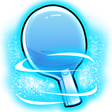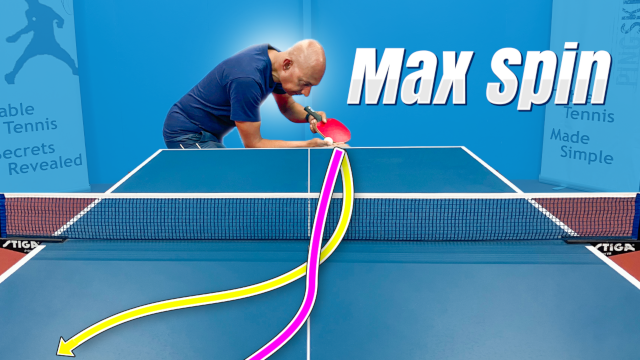Serves first contactpoint
Serving
D K Asked 6 years ago
Greetings Team,
I was silent for a while,solving most of my school,work and also table tennis administrative issues.
Now I am back,with a fresh new membership in one of the most powerful clubs in my country.
Yesterday,both clubs and me signed the transfer papers.
Though,I am very sad,I will never be able to accept the new club as my home team...
Anyway,to my question:
I started training some serves after a longer break.
Apart from that I struggle with how my stroke should exactly look like to perform a full-length serve,here I know I would need some closer analysis of my whole body work etc.
What I would like to ask about the inverse option,the extremely short serve.
My plan is to learn how to alternate between two depth extremes. I would like to know where the ball should land on my side to enable the shortest and lowest possible serves.
I have seen how Ma Lin places the ball during his ghost serve,and he places it quite close to the net.
Is it some deviation or...what is the correct placement for the serve to be as short as possible in your opinion?
Thanks
Dan
 Alois Rosario Answered 6 years ago
Alois Rosario Answered 6 years ago
Hi Dan,
I think it should be about ⅓ of the way to the net on your side. If you get it too close to tenet it needs to be very slow to stop and get over the net.
Closer to the net will allow it to be shorter but it is also much easier to see the length of the serve early.
Recommended Video
How To Master Spin Serves in Table Tennis
Want to take your table tennis serves to the next level? In this episode, we break down how to master spin serves to gain the upper hand in every match.
What You’ll Learn:
✅ The Fundamentals of Spin Serves – How to generate and control spin for maximum effectiveness.
✅ Common Mistakes – The biggest serve errors players make and how to fix them fast.
✅ Viewer Q&A – Your top questions about serving, answered!
✅ Train Smarter – Drills to help you develop spin, deception, and consistency.
Adding spin to your serves can completely change your game. Which spin serve do you struggle with the most? Let us know in the comments!
Watch NowThoughts on this question
Become a free member to post a comment about this question.

Nigel C Posted 6 years ago
DK, I have also read articles that say if your first bounce is too close to the net then the ball will just drop over the net and bounce upwards with very little forward momentum. This makes it very easy to return short. If the first bounce is slightly away from the net and you just clear the net then the forward momentum makes the short ball harder to return without popping the ball up. Diagrams would probably explain this better.
Alois, Jeff what do you think?
Yep agree.
D K Posted 6 years ago
Yea,I am aware that there is some danger of popping the ball too much.
And I am fully aware that this serve is quite easy to return short,but since I know it,I can prepare for it and use it as a strategy.
However,my major reason for learning so short serve is to pull an opponent previously placed backwards by a few fullspeed serves back to the table.
Nigel C Posted 6 years ago
DK, I'm sure you will get it right and your short serves will be effective. What I have trouble with is making a short serve action look as energetic as a long serve, so it's hard for the receiver to tell the difference until the last minute.
D K Posted 6 years ago
I hope so...everyone around me tells me to use mainly a serve which has its second bounce on the opponent's side at the back line.
However,this serve causes me getting mostly very uncomfortable returns and it does not throw opponents off balance.
Frank Lucas Posted 6 years ago
DK, The 2 bounce on their side rule is usually a way to measure backspin. If the serve is too high, your opponent can just flip through your serve. If you don't mix up your placement, or the ball is too short, they may be able to move and find a strong angle of placement.
Keep your serves lower and away from the center of the table and try to pressure whichever side your opponent is less confident on opening up with.
D K Posted 6 years ago
Frank,I meant mainly the type of return.
I do not like when I get passive spinless push or disgusting flat hit without energy,which are the most common returns against my 2bounce serves.
And I am also aware of this strategy.
My initial question revolves around technique enabling me to "squeeze the ball between table and net on the opponent's side".
Nigel C Posted 6 years ago
Frank, the 2nd bounce is called a half long serve, the 2nd bounce should be just on or just missing the end of the table and so put doubt in the mind of the receiver on how to return the ball.
DK, I don't think I am near your level but I often get points by one long backhand serve with lots of side, then try the same action but really brush the ball so it only just goes over the net - short to a right handers forehand. (the first bounce being two thirds of the way to the net) As they are often expecting a long serve there is just a slight hesitation in getting to the ball and it is quite often popped up high to attack or they miss the table. The big risk is if they read it and or its too high then it can be flipped easily.
D K Posted 6 years ago
Nigel,I am not sure what is your level,but I would say I am much weaker.
I am aware of what serves do you mean,I also use this combination sometimes.
As a receiver though,I personally hate the second serve because it is very difficult to impart a low heavy backspin on it.
Thus I often receive it with long pimple swipe.
What I do as a further variation is that with the second serve,I alter between heavy backspin,heavy topspin and no spin.